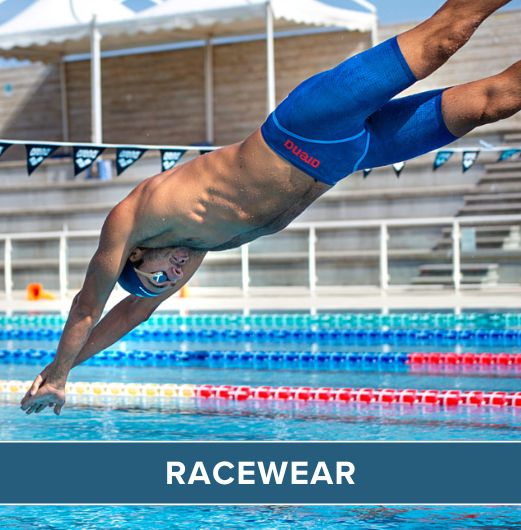If you want to map out the history of swimming and find out where it originated, then you will have to go back a long way. Some of the earliest drawings from the Stone Age in Egypt show people swimming. Written references to people swimming can also be found in the Bible, the Odyssey and the Iliad.
The Origins of Swimming
We can safely say that people were swimming in Egypt during the Stone Age. The fact that this was recorded in drawings on the wall of the 'cave of swimmers,' does not give 100 per cent proof that it wasn't happening anywhere else. It just proves that the Egyptians were better at recording things than the rest of the world.
The cave of swimmers can be found in Southern Egypt near the Libyan border. The exact location should you want to Google it, is Wadi Sora. The amazing thing about the pictures is the fact that it looked like Egyptians enjoyed doing the breaststroke and the doggy paddle. Experts have said that the movements depicted in the water could well have been related to some mystical religious ceremony. An interesting fact is that this cave features in the film, The English Patient.
Further proof of the swimming prowess of Egyptians, can be seen in a clay seal that is thought to have been created between 4000 B.C and 9000 B.C. This depicts four swimmers who are performing their interpretation of the modern day crawl. Let's face it, when historians look back at the great ancient empires, they are not particularly looking at how well these people could swim, but if you search hard enough, you will find lots of evidence. If civilisation started in Africa, then it is possible that the popularity of swimming came out of the Middle East and Africa. There are many references to people swimming, in Babylon and Assyria, with the majority of people preferring the breaststroke as the best means of travelling through the water. There are no known pictures at this stage of the butterfly or backstroke. These would be seen much later.
Some of the most famous drawings of swimming can be found in the Kebir desert, which on the surface, seems to an unlikely place. These date from about 4000B.C. An Egyptian burial chamber has a picture of a swimmer doing the front crawl, and the depiction of swimmers can be seen in civilisations such as the Minoans, Hittites and other cultures throughout in the Middle East. However, it doesn't stop there, and we can find evidence of swimming in the Inca cultures in Central America, and ancient India.
During this period, it is highly likely that swimming was practised wherever man had access to water, though, it was not recorded anywhere for prosperity. The Greeks and Romans practised swimming and a little-known fact about Julius Caesar, was that he was rather good at it.
The origins of the swimming races came much later in the Western World, but in Japan, swimming was a skill that was essential for the Samurai Warrior. Historical records of the period 36 B.C have graphic descriptions of the first ever, swimming competitions.

The Origins of Swimming in the Middle Ages
One of the seven skills that knights had to have in the Middle Ages was the ability to swim wearing armour. Swimming in the main was performed naked, and during this period was opposed by the Church as 'ungodly.' The origins of the first ever book about swimming can be traced to the Middle Ages, and was written by a German Professor. He wrote the book "Colymbetes," not to show people how to exercise, but to stop them from drowning. The book showed the technique involved with doing the breaststroke and depicted the first ever swimming aids, which included, cork belts, reed bundles and blown up cow bladders. The English equivalent of this swimming guide appeared around the same time and was written by E. Digby. Mr Digby claimed that it was possible for humans to swim better than fish.
It was 1603 in Japan that one of the first milestones was established. The Japanese Emperor organised the National Swimming Federation with an aim to teach Japanese school children how to swim.

The Origins of Modern Day Swimming
In 1896, we entered the 'modern day' Olympic era when the Olympic Games were held in Athens. Swimming here was an all-male skill, and there were six events planned but only four that were actually contested. It wasn't until the Olympic Games in 1912 that women were allowed to compete.
Swimming as a sport didn't take off in Britain until the 1830s, and it was as late as 1828 that the first swimming pool was constructed indoors. By 1837, regular competitions had been organised in six artificial pools that had been built around London. The sport of swimming grew in popularity during the 19th century, and the Amateur Swimming Association was formed during this period. By this time, the popularity of the sport was so big that over 300 clubs had been formed regionally.
To ask the question about where swimming originated from is like asking where walking running and climbing first started. It seems that swimming has always been a natural instinct in man, and also performed useful functions, such as catching fish and fighting. It had certainly started 10,000 years ago in Egypt, but more than likely started the first time somebody fell into some deep water and began moving his or her, arms and legs.
There is evidence that swimming had a ritual meaning for the Egyptians, and also lots of detail on how important it was considered to be for Knight and warriors. There are even mosaics in Pompeii depicting swimmers, so it was a natural step for ancient man to construct swimming pools. Evidence of these can be found everywhere in old pictures and writing and probably was the reason why swimming started to become a sporting activity.



 Free Tracked UK Delivery
Free Tracked UK Delivery Hassle Free Returns
Hassle Free Returns Next Working Day OPTION
Next Working Day OPTION Found It Cheaper?
Found It Cheaper?













